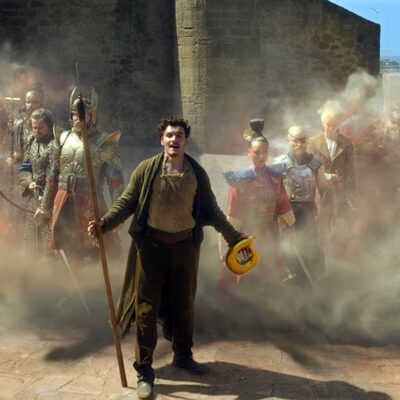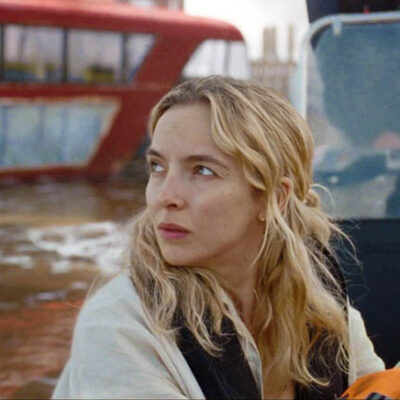“We also did a large greenscreen shoot at an airport on Long Island,” reveals Rider. “The 1940s terminal at Newark Airport still exists, but it wasn’t feasible to film there, so we completely created that building in CG. We had crowds and principal actors on greenscreen. We shot a number of crowd tiles for our ground-level work, but for aerial shots you’re seeing digital doubles. We wanted to show that thousands of people are coming to see Charles Lindbergh. Shooting from a helicopter, 150 people gets small really fast. The idea was that Lindbergh is landing at Newark Airport with the Spirit of St. Louis, so we filmed at a small airstrip in Upstate New York where they have a perfect replica of the plane. We brought our Lindbergh actor, so when you see the final product it is a combination of a complete CG environment and elements that were shot at Long Island and Upstate New York.”
Editorial had a significant role in the development and integration of the visual effects, with Joe Hobeck (Homeland) cutting scenes in Washington, D.C. and Madison Square Garden while Brian Kates (The Marvelous Mrs. Maisel) assembled the Lindbergh flyover sequence. “Brian cut the sequence taking pieces of Lindbergh and potential pieces of the background to map out the story in a way that flowed editorially,” notes Rider.
“I would see that we were using a piece of foreground of our Lindbergh greenscreen where the sun appears to be coming from the wrong direction,” adds Rider, “and I’d say, ‘I might be able to find another section that tells the story that you want to tell that hangs together better visually.’ I would take what he had edited and create new temps that had background and foreground more in sync visually in terms of lighting and angles. I would give them back to editorial to put into the cut. We did that a number of times.” There was a constant back and forth between visual effects and editorial. “As we would refine a cut, depending on the shot, we would work out in either After Effects or Avid temp to give a sketch of what we intended the work to be,” remarks Shanley. “Enough was done practically that we weren’t caught in a situation where we needed a build to come in from visual effects.”






















